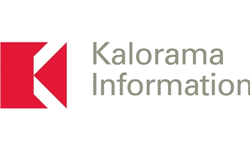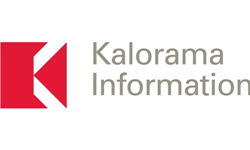
ARLINGTON, Va. (PRWEB)
March 31, 2021
Crisis innovates healthcare. This testament was made painfully obvious over the past year as an unprecedented pandemic challenged not only the IVD market, but all of healthcare. Especially challenged were IVD companies, who learned under pressure amidst a great mobilization of diagnostics and COVID-19 tests that ultimately helped mitigate the pandemic. There are at least three strategies IVD companies can employ based on the experience of the pandemic, according to Kalorama information.
Medical market research publisher Kalorama Information expects such testing will remain an essential part of conquering the pandemic, even as vaccines become more widely available. Still, there’s more. When examined from a wider perspective, the COVID-19 pandemic has created various new opportunities in the IVD and healthcare market, each of which is chronicled by Kalorama Information in the company’s latest report 2021 IVD Market Update and COVID-19 Impact.
1. Telehealth and Remote Patient Monitoring
COVID-19 has had a noticeable effect on telehealth and remote patient monitoring segments, causing massive acceleration in use. In the United States, telehealth usage has advanced from 11 percent in 2019 to over 45 percent in 2020. This increase in telehealth usage was precipitated by patients not being able to visit the doctor due to the lock downs and social distancing. Consumers support the expansion of telehealth options and would like to see those options continue even after the pandemic passes.
A solid driver of telehealth is the growing aging population and the growing number of individuals with at least one chronic disease. Approximately 45 percent of Americans have at least one chronic disease. This is expected to increase to 49 percent by 2025 as aging of the population continues and life expectancy lengthens. In addition, virtual care is continuing to expand further with remote data monitoring using wearable devices like heart rate monitors, blood pressure monitors, blood oxygen levels and diabetes monitoring. Diabetes monitoring has long been at the forefront of remote patient monitoring.
2. Expanding Options in Reimbursement
There had been small incremental improvements in remote patient monitoring (RPM) usage and reimbursement over the years, but it exploded in 2020 driven by COVID-19 expansion of telehealth. There has been a flood of new reimbursement codes created by Medicare for RPM reimbursement. CMS has created a specific code for a 20-minute office call to set up a patient for RPM and then established additional coding for monitoring, as well as codes for collection and review of data. The introduction of RPM billing into Fee for Service billing and Value Based Reimbursement has accelerated the transition from fixed office visits to virtual management.
3. Point-of-Care
In response to the growing COVID-19 pandemic, there has been an uptick in the availability of point-of-care (POC) COVID-19 tests. This is particularly true in molecular point-of-care. POC tests were growing rapidly before the pandemic, but test manufacturers have stepped up the development of reliable POC tests to answer the call for rapid and easy to use devices to facilitate testing outside the laboratory. This has helped to spotlight the ease and quality of all FDA cleared POC tests.
Kalorama’s latest market research report is: 2021 IVD Market Update and COVID-19 Impact.
About Kalorama Information:
Kalorama Information, part of Science and Medicine Group, is the leading publisher of market research in healthcare areas, including in vitro diagnostics (IVD), biotechnology, healthcare, medical devices, and pharmaceuticals. Science and Medicine Group supports companies seeking to commercialize the rapidly changing marketplace at the intersection of science, medicine, and technology. Comprised of industry-leading brands, Science and Medicine Group serves analytical instrument, life science, imaging, and clinical diagnostic companies by helping them create strategies and products to win markets and provide platforms to digitally engage their markets through a variety of innovative solutions. Kalorama Information produces 30 reports a year. The firm offers a Knowledge Center, which provides access to all published reports.
Share article on social media or email:

